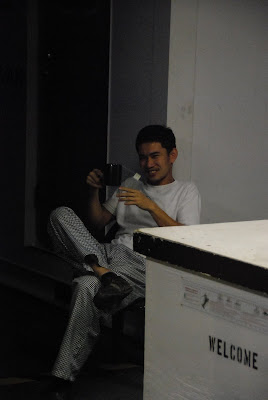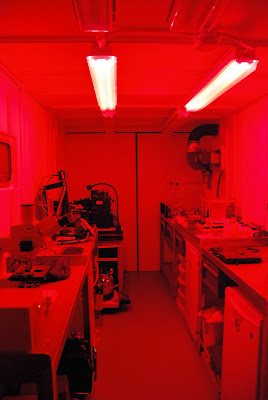








BIOS is an independent US non-profit scientific research and educational organization based in Bermuda. For over 100 years BIOS-based researchers and visiting scientists have worked to explore the ocean and address important local and global environmental issues.




































The first deployment of our 3-day sediment traps were tracked down shortly after dinner. Over 3 days, they had traveled about 23 miles and from Rob Condon’s conversions, the array was traveling at 13.9 cm per second. Ocean surface current’s speed average 15 cm/s.
From this array, scientists are able to measure the flux of particulate material settling to deeper depths from the euphotic zone. The amount of exported material gives researchers the ability to determine two things: the strength of the biological carbon pump (amount of downward flux of organic matter) and efficiency (export flux compared to primary production).
Particle Intercept Traps (PITS)
33 traps total, formally named Particle Intercepter Traps (PITS), sit at 150m, 200m, and 300m. Each trap is dedicated to a particular measurement. On Trophic BATS, the team is measuring quite a large suite of analytes when considering sediment traps. We will measure for carbon, nitrogen, and phosphorous and biogenic silica. From these 4 elements we can compare the ratios of C:N:P:Si between material that is exported to depth and what elemental ratios exist in living biomass and their ambient chemical conditions. Other measurements are for thorium (which scavenges for decaying material in the ocean) and for DNA sequences of phytoplankton.
The story of DNA measurements in sediment traps is an interesting one and one familiar to the Sargasso Sea. Dr. Susanne Neuer (Arizona State University) previously had a project at BATS investigating the DNA signatures of picoplankton that had been collected by the sediment traps. Susanne, along with Mike Lomas, hypothesized that smaller cells contributed to a considerable portion of the annual flux of sinking material. Rather than large, heavier cells like diatoms that sink to depth, smaller cells had a chance to become export flux from repackaging by zooplankton and particle aggregation. At Trophic BATS, the Neuer team is continuing these measurements. Dr. Stephanie Wilson adds to this aspect of research by comparing the DNA gut content of collected zooplankton to the export flux. This will give us further evidence of zooplankton grazing on very small phytoplankton.
Dr. Neuer and Francesca model with the In-situ Production/Grazing Array. The array is clamped onto a weighted line, so the line is vertical and the array sits perpendicular to the line in the water. Bottles for grazing experiments and for primary production get loaded into the bungees on the outer edge.
Along with Dr. Neuer’s work with the sediment traps, her research is involved with almost all the pieces of the Trophic BATS puzzle. Her graduate student, Francesca de Martini helps lead the grazing in-situ incubations, which are paired with the primary production deployments. Francesca’s grazing experiments are designed on the “Dilution Method.” For this method, 200um filtered seawater is collected and used in the experiments as “whole” – 100% seawater and 25% seawater (75% filtered seawater). The comparisons of diluted vs. undiluted incubation bottles give insight into two very important aspects of the food web. The difference in chlorophyll shows the bulk phytoplankton growth rate and it’s inverse, the bulk microzooplankton (zooplankton between 20-200um) grazing rate. While, these are bulk rates, Neuer and team are able to determine plankton species composition by Epifluorescence microscopy and flow cytometry. Epifluorescence uses DAPI, a biological stain, to attach to DNA and if excited by UV light, the DNA excites and fluoresces which can be visibly seen by the microscope and described as a starry night sky by Francesca.
Francesca performing her favorite task on board: filtering liters and liters of water.
It is certainly a unique and interesting portion of the project. Tomorrow, we’ll focus on the two words I mentioned earlier with Susanne’s research – flow cytometry.





